Discover Turkey’s 7 Regions: Famous Foods, Landmarks & Traditions
Turkey is a country surrounded by seas on three sides, situated in a unique geography and bearing the traces of thousands of years of civilisations. This unique land is divided into seven regions according to its geographical, cultural and historical richness: Marmara, Aegean, Mediterranean, Central Anatolia, Black Sea, Eastern Anatolia and Southeastern Anatolia. Each region forms the mosaic structure of Turkey with its unique texture.
Exploring the 7 regions of Turkey means meeting different flavours, travelling back to the past in historical places and being alone with nature. Here is everything you need to know about Turkey's regions👇
1. Marmara Region Guide: Where Does Turkey's Heart Beat?

The Marmara Region is located in northwestern Turkey and, with its strategic position connecting both Asia and Europe, is the country's centre of trade, industry, culture and transportation. This region, which attracts the attention of not only Turkey but also the world, stands out both for its historical past and its modern structure. With cities such as Istanbul, Bursa, Edirne, Çanakkale, Kocaeli, Sakarya, Balıkesir, and Tekirdağ, the Marmara Region is like an open-air museum.
The Historical Importance of the Marmara Region
The Marmara Region has been home to many great civilisations throughout history. The Byzantine, Roman, and Ottoman Empires were either founded or ruled from these lands. Istanbul, in particular, served as one of the world's capitals for over 1,600 years, shaping the course of empires. Edirne is another important city that served as the capital of the Ottoman Empire. The Battle of Gallipoli was a significant turning point both in Turkey's struggle for independence and in world history.
In this sense, the Marmara Region is not only a natural and economic hub but also Turkey's historical memory.
Marmara in Terms of Economy and Industry
The Marmara Region is an economic centre that accounts for a large part of Turkey's industrial production. Cities such as Istanbul, Kocaeli and Bursa are leaders in the automotive, textile, electronics, chemical, food and logistics sectors. Turkey's largest ports, most densely populated industrial areas and busiest land, air and sea transport routes are located in this region. In addition, Istanbul has strategic importance as a rising metropolis among world financial centres.
Cultural Heritage and Richness of Marmara

The Marmara Region is Turkey's most cosmopolitan region in terms of cultural diversity. Communities of different ethnic origins have been living together in this region for centuries. Istanbul, in particular, is a world city rich in art, music, literature and architecture.
Ottoman mosques, Byzantine churches, historic inns, castles, bridges, and monuments can be seen in every corner of the Marmara. At the same time, the region is quite dynamic with contemporary art galleries, theatres, film festivals, and cultural events.
Tourist Attractions
Marmara is a region that attracts visitors not only with its history but also with its natural beauty and cultural heritage. Istanbul's breathtaking views, the Bosphorus, Galata Tower, Sultanahmet Mosque, Topkapi Palace, and the Grand Bazaar are world-renowned tourist destinations that welcome millions of visitors each year.
Bursa attracts tourists all year round with its historic Ottoman buildings and popular ski resorts such as Uludağ. Yalova's thermal springs, the tranquil nature of Lake Sapanca, and Edirne's Selimiye Mosque, Kırkpınar Wrestling Festival, and palace ruins are also must-see destinations.
Çanakkale, with its historic Gallipoli Peninsula, memorials, and ancient city of Troy, is a favourite destination for both domestic tourists and world historians. Tekirdağ, with its vineyards and coastal towns, is one of the stars of the summer season.
Natural Beauty and Geographical Structure
Despite being Turkey's most densely populated and developed region, the Marmara Region has not compromised on its natural beauty. The Marmara Sea gives the region its name, and the surrounding coastlines are bustling with holidaymakers during the summer months. While the Thrace region is notable for its agricultural production, places like the Kaz Mountains in Southern Marmara are natural paradises for both ecotourism and trekking enthusiasts.
Uludağ is not only a magnet for ski lovers but also for nature walkers and camping enthusiasts. Ecosystems such as the Sakarya River, Manyas Bird Sanctuary and Longoz Forests are examples of the natural richness of Marmara.
Marmara Cuisine: Rich and Diverse Flavours

The cuisine of the Marmara Region is as diverse as its culture. Istanbul offers the best examples of world cuisines while also preserving the tradition of palace cuisine. Edirne's liver, Bursa's famous İskender kebab, Tekirdağ's meatballs, Balıkesir's höşmerim, Thrace's cheeses, and olive oil-based appetisers are among the standout flavours of the Marmara cuisine.
In addition, this region also has an important place in the fields of viticulture and olive growing. Tekirdağ and the Şarköy area produce Turkey's highest quality wines, while the olive groves in South Marmara contribute to the region's economy.
The Importance of the Marmara Region in Turkey
The Marmara Region is not only a transition point for Turkey but also for the continents of Europe and Asia. The Bosphorus Strait is strategically important in terms of trade routes, while the region as a whole is a centre of both economic development and cultural integration. Ambarlı Port, Turkey's largest port, and Istanbul Airport, the busiest airport, are located in this region. Additionally, Turkey's largest media, fashion, and financial institutions are concentrated in this region.
2. Aegean Region Guide: In the Footsteps of Ancient Civilisations, the Dance of Blue and Green

The Aegean Region is located in the west of Turkey and is one of the country's most attractive regions with its natural beauty, historical riches and cultural diversity. Village roads stretching under the shade of olive trees, shores opening onto turquoise bays, ancient cities dating back thousands of years, and a warm lifestyle... The Aegean is not just a region; it is a way of life. Izmir, Aydın, Muğla, Manisa, Denizli, Uşak, Kütahya, and Afyonkarahisar are the main cities of this region.
The Historical and Archaeological Heritage of the Aegean
The Aegean region bears the traces of Ancient Greek, Roman and Byzantine civilisations. This geography has been home to many civilisations throughout history, such as the Ionians, Aeolians and Lydians. The ancient city of Ephesus, in particular, is listed as a UNESCO World Heritage Site and attracts millions of tourists every year. The Temple of Artemis, the Celsus Library and the ancient theatre are among the most famous structures in Ephesus.
Bergama was one of the most important centres of the ancient world in terms of both science and art. The Asklepion, which followed in the footsteps of Hippocrates, the father of medicine, is one of the birthplaces of modern medicine. Aphrodisias was the centre of sculpture art during the Roman period. Similarly, ancient cities such as Laodicea, Priene, Didyma, Miletus and Heraclea are among the treasures awaiting history enthusiasts in the Aegean.
Natural Beauty of the Aegean
The Aegean coastline is home to Turkey's most popular holiday destinations. Bodrum, with its white houses, nightlife and luxury yacht marinas, is a favourite not only in Turkey but also around the world. Marmaris, Fethiye and Datça stand out for their quiet bays and opportunities for outdoor sports. Ölüdeniz, in particular, is known as one of the world's best paragliding centres.
The towns of Çeşme and Alaçatı in İzmir attract both local and foreign tourists with their windsurfing, stone houses, and lavender-scented streets. The beaches of Didim and Kuşadası in Aydın, with their wide sandy beaches and ancient heritage, are destinations that can be visited all year round.
The Pamukkale Travertines and the ancient city of Hierapolis, located in the interior of the Aegean, are world-renowned for their natural and archaeological significance. Pamukkale is also one of the most important centres for thermal tourism.
Economic Structure and Agricultural Wealth of the Aegean Region
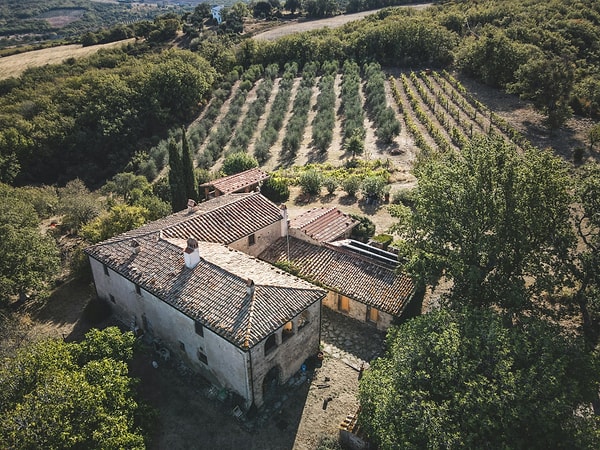
The Aegean Region plays a key role in the Turkish economy with its agricultural products. Olives, grapes, figs, and tobacco are among the region's primary agricultural products. Aydın is a global leader in fig production. Manisa is one of Turkey's largest grape-producing cities. Afyonkarahisar is known for its poppy and sausage production, while Uşak and Kütahya stand out for their carpet weaving, ceramics, and handicrafts.
The region is also rich in geothermal energy resources. Geothermal power plants in Denizli, Aydın, and Manisa account for a significant share of Turkey's energy production.
Cultural Heritage and Lifestyle
The Aegean lifestyle is based on simplicity, naturalness and sharing. The people of the Aegean live in harmony with nature, leading a slow but productive life. The smell of fresh bread from the village bakery in the morning and the strong tea drunk in seaside cafes in the evening are indispensable parts of this lifestyle.
Festivals held throughout the year keep the region's cultural fabric alive. Events such as the Alaçatı Herb Festival, the International Bodrum Ballet Festival, the Izmir International Fair, and the Ayvalık Olive Harvest Days contribute to both tourism and cultural life.
Aegean Cuisine: Where Health and Flavour Meet

The Aegean cuisine is both healthy and delicious, with dishes based on olive oil, fresh herbs, fish and vegetables. Recipes such as artichokes, stuffed courgette flowers, broad bean salad and radish stew are indispensable to the region. Olive oil plays a leading role in both the region's economy and cuisine.
Fish dinners are a tradition in the Aegean. Seafood such as sea bass, sea bream, squid, and octopus is the foundation of the raki-fish culture. Additionally, Aegean winemaking is well-developed, particularly in the vineyards of Urla and Şirince.
Desserts such as höşmerim, lor tatlısı, and incir uyutması are unique flavours that define the Aegean's gastronomic identity.
The Aegean's Place in Turkey
The Aegean Region is one of Turkey's leading regions in terms of tourism potential, agricultural and industrial production, and cultural richness. Population density is higher in coastal areas. Izmir, Turkey's third-largest city, is considered the region's centre. Additionally, the Aegean has ports that serve as Turkey's busiest trade links with Europe.
3. Mediterranean Region Guide: A Geography Shining with Sun, History and Tourism

The Mediterranean Region is located in the south of Turkey and attracts attention with its cities bordering the Mediterranean Sea, its climate offering tourism opportunities throughout the four seasons, its unique nature and rich historical past. This region is not just about the sea and sun; it is also one of the most valuable parts of the country in terms of ancient cities, agricultural production, cultural diversity and international tourism.
The main provinces that make up the Mediterranean Region are Antalya, Mersin, Adana, Hatay, Osmaniye, Isparta, Burdur and the southern part of Kahramanmaraş.
The Historical Depth of the Mediterranean
The Mediterranean Region has been home to many civilisations throughout history. Lycia, Rome, Byzantium, Seljuk and Ottoman civilisations have left their mark on these lands. Ancient cities such as Patara, Perge, Side, Aspendos, Olympos and Termessos showcase the region's archaeological wealth.
The Aspendos Theatre is one of the ancient theatres with excellent acoustics that is still standing today. The Lycian Way is among the world's most famous hiking trails, combining history and nature. The Mosaic Museum and Saint Pierre Church in Hatay reflect the richness of the region's religious and cultural heritage.
Natural Beauties of the Mediterranean: From the Coast to the Taurus Mountains
The Mediterranean Region has the longest coastline in Turkey. The turquoise bays, beaches, cliffs and forested mountains that stretch along these shores make the region unique. Antalya's world-famous Konyaaltı and Lara Beaches, Mersin's pristine coastline, Adana's Seyhan and Ceyhan rivers, Isparta's Eğirdir and Burdur's Salda Lake** offer a holiday experience surrounded by nature.
Salda Lake is known as ‘Turkey's Maldives’ and has been compared to Martian soil by NASA. Köprülü Canyon is popular for rafting and camping. Saklıkent Canyon is a popular destination for those seeking cool escapes on hot summer days.
The Taurus Mountains offer both a cool living environment and ideal routes for nature sports, along with a culture of highland pastures.
Agriculture and Economy: Turkey's Vegetable and Fruit Garden
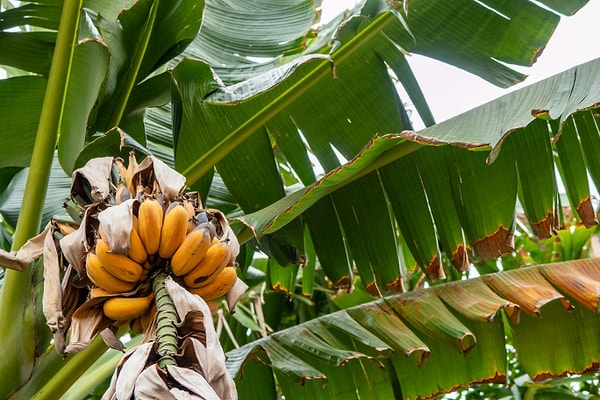
The Mediterranean Region is one of Turkey's most fertile agricultural areas. The plains of Adana and Mersin provide vegetable and fruit production throughout the year. The region is among the leading producers of many products such as citrus fruits, bananas, tomatoes, cotton, olives, figs, peppers, and eggplants. Greenhouse and covered agriculture activities are particularly concentrated in Antalya.
The Antalya Chamber of Commerce and the Port of Mersin play a key role in the export of agricultural products abroad. Additionally, the free zone in Mersin is one of Turkey's most active economic regions. Tourism is one of the Mediterranean's most important economic pillars; Antalya, in particular, is known as Turkey's tourism capital and hosts millions of tourists annually.
The Star of Tourism: Sea, Sand, Sun, and More
The Mediterranean is not only an active destination for summer holidays but also for cultural tourism, nature tourism, gastronomic tourism, and health tourism. Coastal towns such as Alanya, Kaş, Kalkan, Kemer, and Side stand out for their crystal-clear seas, quality hotels, and vibrant nightlife.
The ancient cities, historic churches, mosques, and castles in the region offer unique opportunities for cultural tours. Cities in the lake region, such as Isparta and Burdur, are ideal for those seeking a peaceful and relaxing holiday. Isparta's lavender fields are a favourite among social media users during the summer months.
Culture and Gastronomy of the Mediterranean

The Mediterranean cuisine is known for its delicious and healthy dishes. Olive oil-based dishes, vegetable-heavy recipes, seafood, and abundant use of spices stand out. The Hatay cuisine has been included in the UNESCO Creative Cities Network and attracts attention among world cuisines with its flavours such as künefe, hummus, oruk, and tepsi kebab.
Adana's famous kebab is a well-known delicacy not only in Turkey but also around the world. The turnip juice served alongside it is an integral part of this culinary culture. In Antalya, unique flavours such as piyaz, tahini pumpkin dessert, and orange marmalade stand out.
In the Mediterranean, eating is not just about filling your stomach, but also a means of cultural sharing. Large tables, neighbourly relations and the habit of eating together are at the heart of this culture.
The Strategic Importance of the Mediterranean for Turkey
The Mediterranean Region is a key area for Turkey in terms of tourism, agriculture, energy, and logistics. Natural gas pipelines, ports, trade routes, and air transport infrastructure make the region economically and strategically strong. The Adana Incirlik Air Base is a critical point in international defence strategies.
Additionally, thanks to the year-round tourism potential offered by the Mediterranean climate, it is one of the regions that contributes most to Turkey's foreign exchange income. The international airports in Antalya and Mersin are of great importance in terms of global connections.
4. Central Anatolia Region Guide: History, Civilisation and the Silent Power of the Steppe in the Heart of Turkey

The Central Anatolia Region is located in the very centre of Turkey and is the country's second largest region in terms of area. With its vast plains, historical depth, agricultural production and ancient cities, it forms one of Turkey's cultural and economic backbones. This region, which covers the inner parts of Anatolia, includes cities such as Ankara, Konya, Eskişehir, Kayseri, Sivas, Aksaray, Kırıkkale, Kırşehir, Nevşehir, Niğde, Yozgat, Karaman and Çankırı.
Central Anatolia: Rich in History
Central Anatolia carries the building blocks of Turkish history with cities such as Konya, the capital of the Anatolian Seljuk Empire, and Eskişehir and Kırşehir, which played an important role in the founding of the Ottoman Empire. However, the region's history dates back much further. Çatalhöyük is considered one of the first settlements in human history and is listed as a UNESCO World Heritage Site.
Cappadocia, located in Nevşehir, is one of the most interesting natural and cultural heritage sites not only in Turkey but also in the world, with its thousand-year-old fairy chimneys, underground cities and rock churches. The underground cities of Derinkuyu and Kaymaklı were used as hiding places and places of worship during the early days of Christianity.
Kültepe-Kaniş Karum in Kayseri bears traces of trade with the Assyrians. The Phrygian Valley in Eskişehir is home to the legend of Midas. The Divriği Ulu Mosque in Sivas is one of the most magnificent works of Islamic architecture.
The Nature and Geographical Structure of Central Anatolia
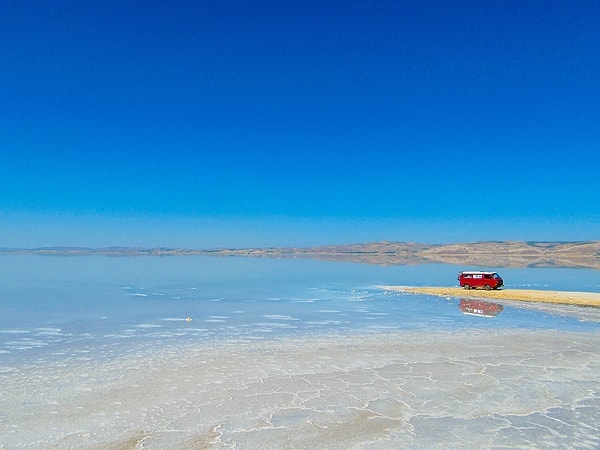
The region is known for its steppe vegetation and plateau structure. Although it is far from the sea, Central Anatolia has impressive natural formations within its borders. Tuz Gölü (Lake Tuz) is Turkey's second-largest lake and offers a breathtaking view with its surface covered in salt crystals during the summer months. It also supplies a large part of Turkey's salt needs.
Cappadocia's unique valleys—such as Güvercinlik Valley, Ihlara Valley, and Zelve—are must-visit destinations for nature hikers and photography enthusiasts. Kayseri's Erciyes Mountain, neighbouring Mount Nemrut, is the shining star of Central Anatolia in terms of winter tourism. Erciyes Ski Centre, one of Turkey's major ski resorts, offers a variety of slopes for both professionals and amateurs.
Agriculture and Industry: The Backbone of Central Anatolia's Economy
Central Anatolia is known as Turkey's granary. It leads in the production of crops such as wheat, barley, rye, chickpeas, and lentils. The Konya Plain, equipped with modern systems and agricultural machinery, is one of Turkey's most productive agricultural areas. Similarly, places like Ankara Polatlı and Yozgat, Boğazlıyan are centres of agricultural production.
The region is also developing rapidly in terms of industry. Eskişehir stands out in the aviation and ceramics industries. Ankara is not only the capital city, but also stands out with its defence industry and advanced technology investments. Kayseri contributes greatly to the country's economy with its furniture, textile and food industries.
The Capital Ankara: Where Modernity and History Meet
Ankara is not only the capital of Turkey but also the most developed city in Central Anatolia with its modern urban planning, universities, political structures, and cultural life. Anıtkabir, the eternal resting place of Gazi Mustafa Kemal Atatürk, is visited by millions of people every year.
The Museum of Anatolian Civilisations in the city houses unique artefacts from the Hittite, Phrygian, Urartu and Roman periods. Additionally, structures such as Atakule, Hamamönü and Kocatepe Mosque complete Ankara's architectural and cultural fabric.
Central Anatolian Culture: The Power of Tradition

Life in Central Anatolia is characterised by a blend of traditional values and modernisation. Hospitality, sincerity and sharing form the basis of this culture. Yörük and Turkmen culture is still alive, especially in cities such as Konya, Karaman and Aksaray.
Festivals, folk dances, the tradition of aşık (troubadours) and the culture of türkü (folk songs) held throughout the year reflect the cultural richness of the region. In particular, the figure of Nasreddin Hoca has become one of the symbols of the region in the Eskişehir-Akşehir area.
Central Anatolian Cuisine: From Meat Bread to Tandır Soup
The Central Anatolian cuisine is known for its meat and flour-based dishes. Konya's meat bread, tandir kebab, and okra soup; Kayseri's mantı, pastırma, and sucuk; and Nevşehir's testi kebab are all unique to this region. Ankara's famous aspava culture keeps the restaurant scene lively even late into the night.
Sivas' madımak dish, Tokat's stuffed vine leaves, Karaman's unique batırık, and Yozgat's arabası are traditional flavours that adorn Central Anatolian tables.
For dessert, Kayseri's nevzine, Sivas's tel helva, and Konya's höşmerim are enjoyed by both locals and visitors alike.
Strategic and Cultural Importance of Central Anatolia
Central Anatolia is a strategic centre in terms of transportation, administration, logistics and communication as it is located in the middle of Turkey. It is easily connected to all four corners of the country through railways, motorways and airports.
At the same time, the traditions that carry the spirit of Anatolia make this region not only a geographical centre but also a cultural centre. Anatolian wisdom, tolerance and solidarity form the basis of these lands.
5. Black Sea Region Guide: Turkey's Green Heart, a Geography Full of Legends

The Black Sea Region is located in northern Turkey and consists of cities bordering the Black Sea, from which it takes its name. The region is one of the most striking geographical areas not only in Turkey but also in the world, with its lush forests, misty mountains, rushing rivers, unique culture, music, cuisine and rich history. Surrounded by natural beauty, this region attracts every traveller with its nature tourism, cultural richness and authentic lifestyle.
Trabzon, Rize, Artvin, Ordu, Giresun, Samsun, Amasya, Tokat, Sinop, Bartın, Kastamonu, Zonguldak, Karabük, Bolu, Düzce, Çorum and Bayburt are the main provinces that make up the Black Sea Region.
The Natural Heritage of the Black Sea: A Thousand Shades of Green
The Black Sea is the region of Turkey that receives the most rainfall, and as a result, it is covered with lush forests, mountains, and deep valleys. Rize's Ayder Plateau, with its pine trees rising above the misty clouds, is a favourite among nature lovers. Plateaus such as Pokut, Gito, Anzer, and Elevit offer the purest form of nature. These high-altitude plateaus still preserve the traces of nomadic culture during the summer months.
The Kaçkar Mountains are home to some of Turkey's most challenging and impressive mountain hiking trails. Artvin's Karagöl Lake invites visitors with its enchanting reflection, as if inviting them into a painting. The Boztepe and plateau roads between Giresun and Ordu offer unique routes where you can enjoy a bird's-eye view of the Black Sea.
Sinop is Turkey's northernmost point, and Hamsilos Bay is described as a natural wonder with its fjord-like coastline. Küre Mountains National Park, located on the border of Kastamonu and Bartın, is among Europe's protected areas with its biological diversity and untouched nature.
History and Civilisation of the Black Sea

The history of the Black Sea dates back to 1000 BC. The region has been home to important settlements during the Pontus Kingdom, Roman Empire, Byzantine, Seljuk and Ottoman periods. Amasya is known as the city of princes, where Ottoman princes were raised. The Amasya Houses and the rock tombs along the Yeşilırmak River preserve the region's historical fabric.
The Sumela Monastery in Trabzon is one of the most visited historical structures on the Black Sea. Carved into steep cliffs at an altitude of 1,200 metres, this monastery is a masterpiece from the Byzantine period. The Trabzon Hagia Sophia and Atatürk Mansion are also among the cultural treasures of the region.
The coal mines of Zonguldak played a major role in the development of industry in Turkey. Safranbolu in Karabük is on the UNESCO World Heritage List for its houses that carry Ottoman civil architecture to the present day. These historical houses contribute to Turkey's cultural heritage as examples of construction without the use of stone, wood or nails.
Black Sea Cuisine: Cornmeal, Butter and Anchovy Triangle
Black Sea cuisine is known for its ingredients directly related to nature and its simple but intense flavours. Anchovies are at the heart of Black Sea cuisine; dishes made from this fish, such as anchovy pilaf, anchovy stew and anchovy frying, are among the region's staples. Mıhlama (kuymak), made with cornmeal and butter, is an iconic dish especially popular at breakfast.
Rize's kavurma and Laz böreği, Trabzon's Akçaabat köfte, Ordu's walnut halva, and Giresun's hazelnut desserts make up the rich Black Sea cuisine. Additionally, 70% of Turkey's hazelnut production comes from this region.
Tea is both an economic and cultural symbol of the Black Sea. The Çaykur factories and tea gardens in Rize are not only a source of livelihood for the region but also visually and tastefully appealing areas for visitors.
Black Sea Culture: Highlands, Kemençe, Horon

The people of the Black Sea are known for their energy, witty language, generosity, and independent spirit. One of the fundamental elements of the region's culture is the tradition of yaylacilik. During the summer months, people move from the villages to the highlands, where festivals, celebrations, and highland migrations are held. This tradition is an expression of maintaining a lifestyle in harmony with nature.
Horon is the most well-known folk dance of the Black Sea region. Accompanied by the kemençe, this dance is a ritual of solidarity, resilience and unity with nature. Traditional Black Sea weddings, with their colourful costumes, bagpipe music and celebrations that last until dawn, are an important part of cultural life.
The dialects of the Black Sea region are known and loved throughout Turkey. The region's sense of humour has been the subject of many theatre plays, television series and films.
Economy of Black Sea
The Black Sea Region is highly productive in terms of agriculture. It is Turkey's leading producer of products such as tea, hazelnuts, corn, cabbage, kiwi and tobacco. Forestry, fishing and small livestock farming are also widespread. In recent years, ecotourism, nature sports, highland tourism and cultural tourism have become important sources of income in this region.
Samsun is one of the region's largest port cities and the gateway to Black Sea trade. As a key logistics hub, the city plays a major role in the regional economy with its industrial and transportation infrastructure.
6. Eastern Anatolia Region Guide: Land of High Mountains, Deep History and the Silent Power of Anatolia
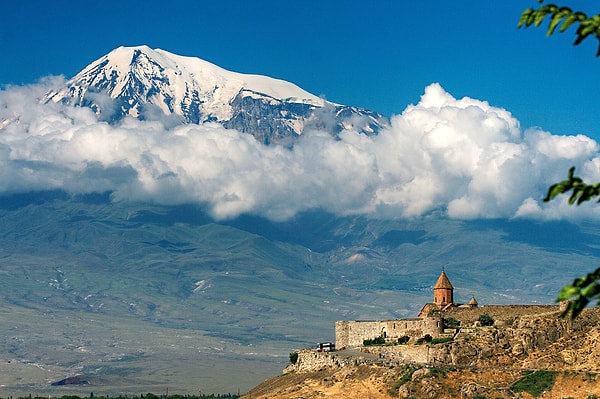
The Eastern Anatolia Region is Turkey's largest region in terms of area and its least densely populated region in terms of population density. However, these vast lands have been home to countless civilisations, enchanted visitors with their natural beauty, and carried the deepest aspects of the Anatolian spirit with their rich folklore and culture. Here, the sky is clearer, the mountains are higher, and history is older.
The Geographical Structure and Natural Features of Eastern Anatolia
The region is home to Mount Ararat, Turkey's highest point. At 5,137 metres high, this legendary mountain attracts both mountaineers and photographers. The Ishak Pasha Palace, located at the foot of Mount Ararat, is a unique example of Ottoman and Iranian architecture.
A large part of the region consists of high plateaus, deep valleys and mountainous terrain with harsh climatic conditions. Winters are long and harsh, giving the region significant potential for winter tourism. Palandöken Mountain (Erzurum) is one of Turkey's most developed ski resorts, attracting both local and foreign tourists.
Lake Van is Turkey's largest lake and is located in the east of the region. This huge lake, rich in sodium, offers a unique view with the Nemrut and Süphan Mountains surrounding it. Akdamar Island, located in the middle of the lake, and the Akdamar Church on it are among the most impressive examples of Armenian architecture.
The Historical Richness of Eastern Anatolia

Eastern Anatolia bears the traces of many civilisations, including the Urartians, Hurrians, Kingdom of Ararat, Seljuks, Byzantines, Ottomans and many more. This makes the region unique not only for its natural beauty but also for its cultural depth.
The ruins of Ani (Kars) were once an important city of the Middle Ages. With a population that once exceeded 100,000, it was the capital of the Armenian Kingdom. Today, this ancient city, which is on the UNESCO World Heritage List, defies time with its cathedrals, palaces and city walls.
Structures such as Harput Castle (Elazığ), Çavuştepe (Van), Hoşap Castle, Bitlis Ulu Mosque, Erzurum Çifte Minareli Medrese, the historic Murat Bridge in Muş, and Malatya Aslantepe Höyüğü reveal the historical diversity and multicultural structure of the region.
Culture, Tradition and the Spirit of Eastern Anatolia
Eastern Anatolia is a region where Turkish, Kurdish, Zaza, Armenian and Arab cultures coexist, representing the diversity of Turkey's mosaic. This multicultural structure is reflected in the region's cuisine, music, weddings and daily life.
Laments, the dengbêj tradition, long songs, folk tales and legends form the basis of Eastern Anatolia's oral culture. Village weddings, winter fireside chats, summer mountain migrations and cem ceremonies shape the region's social life.
In Kars and Erzurum, folk poets recite their stories accompanied by the bağlama and duduk. The Alevi culture in Tunceli is an important cultural heritage that differs in terms of belief, worship and social structure.
Eastern Anatolian Cuisine: A Powerful Blend of Meat, Grains and Spices
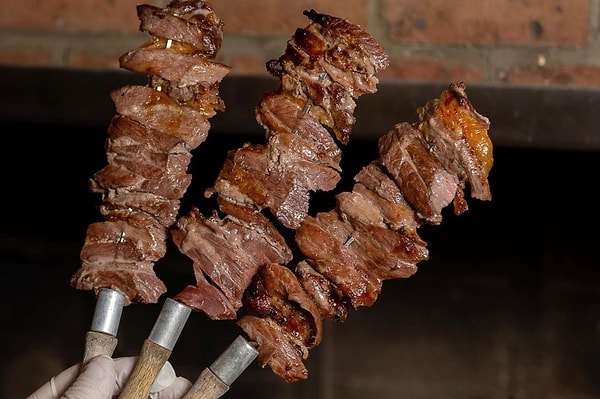
The regional cuisine is known for its rich protein and filling dishes. Cağ kebab (Erzurum), keşkek (Malatya, Elazığ), Kurdish meatballs, abdigor meatballs (Ağrı), gavut, sour soup, and ayran aşı soup are energy-boosting and nutritious dishes suited to the region's cold climate.
Van breakfast is a famous table culture that includes dozens of local delicacies. Van breakfast, which includes products such as herb cheese, murtuğa, kavut, honey, kaymak, and walnut yoghurt, is one of Turkey's most famous regional breakfast varieties.
For dessert, Kadayıf Dolması (Erzurum), Sütlaç (Muş, Bitlis), Kars honey, and apricot dessert (Malatya) stand out.
Strategic and Economic Importance
Eastern Anatolia is Turkey's gateway to the east. Bordering Iran, Azerbaijan (Nakhchivan), Armenia and Georgia, this region has a strategic location in terms of logistics and trade. It is one of the important transit points for Turkey's energy corridors and natural gas pipelines.
Economic activities are largely based on agriculture, livestock farming, and winter tourism, which have developed in recent years. Organic farming activities are supported in cities such as Erzincan and Bingöl, while cattle farming is widespread around Van and Ağrı.
Must-See Places in Eastern Anatolia
Eastern Anatolia is a region that deserves to be explored not just for its one or two cities, but for nearly all of its provinces. Some must-see places for those planning a trip:
Van Lake and Akdamar Island
Ani Ruins and Kars Sarıkamış
Mount Ağrı and İshak Paşa Palace
Palandöken Ski Centre
Harput Castle and Elazığ Market
Nemrut Crater Lake (Bitlis)
Aslantepe Mound (Malatya)
7. Southeastern Anatolia Region: The Roots of Anatolia at the Crossroads of History, Fertility and Cultures
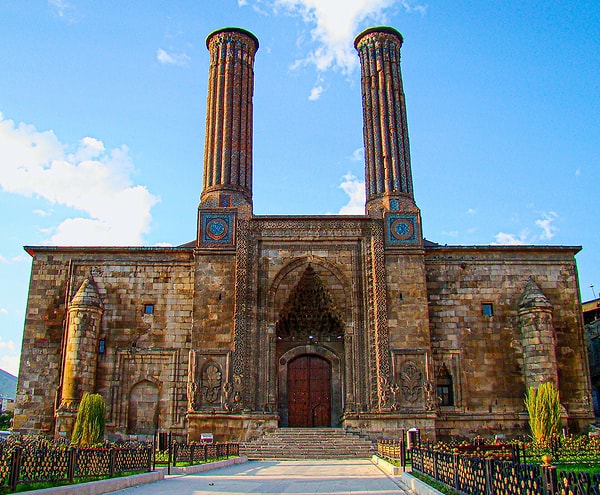
The Southeastern Anatolia Region is one of the oldest settlements in Turkey and has a unique geographical and cultural structure. This region, which is the part of the fertile lands of Mesopotamia extending to the borders of Turkey, is one of the most dynamic regions of Turkey with its rich archaeological remains bearing the first traces of human history, unique culture, cuisine and vibrant economy.
Geography and Climate of Southeastern Anatolia
Southeastern Anatolia is shaped by the valleys formed by the Euphrates and Tigris rivers. While most of the region consists of plains and slightly hilly plateaus, the Southeastern Taurus Mountains surround the region from the north. The climate is dominated by semi-arid and hot summers and cold winters. This climate plays an important role in shaping agriculture and animal husbandry.
The Euphrates and Tigris rivers are the lifeblood of the region; rich civilisations have developed in the lands irrigated by these rivers throughout history. In addition, large irrigation areas created by Atatürk Dam and other dams have increased the agricultural productivity of the region.
History of Southeastern Anatolia

Southeastern Anatolia is considered to be the cradle of human history. Göbekli Tepe, one of the oldest settlements in world history, is located in Şanlıurfa and dates back to 10,000 BC. Göbekli Tepe is an archaeological discovery that rewrites human history; this site, full of temples and monuments, offers unique clues to the beginnings of religion and society.
The region was under the influence of Mesopotamian civilisations, and many civilisations such as the Assyrians, Hittites, Babylonians, Persians, Romans and Byzantines left their mark here. Diyarbakır Walls are among the longest and strongest walls in the world, dating back to the Roman and Byzantine periods. In addition, historical cities such as Hasankeyf are of great cultural and architectural importance.
Culture and Traditions of Southeastern Anatolia
Southeastern Anatolia is a mosaic where many ethnic groups such as Kurds, Arabs, Turks and Assyrians have lived together for centuries. This diversity has added richness and depth to the culture of the region. With its folk music, rich folklore, traditional handicrafts and colourful festivals, the region has a vibrant cultural structure.
In the cities of the region, especially Diyarbakır, traditional crafts such as carpet weaving, coppersmithing and rug weaving are being passed down from generation to generation. In addition, the traditional clothes and wedding rituals of the region reflect the unique identity of this geography.
Gastronomy of Southeastern Anatolia
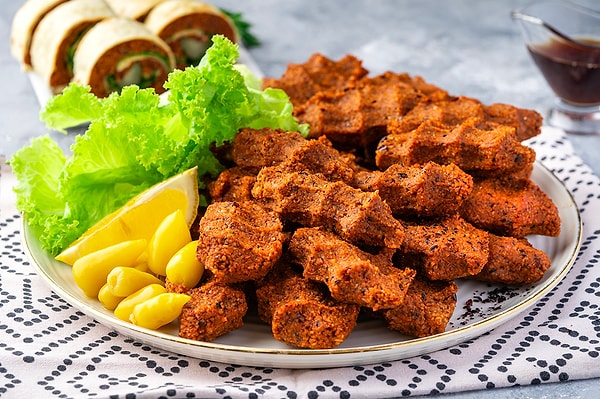
Southeastern Anatolian cuisine is one of the richest and most unique cuisines of Turkey. The dishes, where spices are used abundantly, stand out with intense aromas and satisfying flavours. The most well-known dishes of the region include stuffed ribs, raw meatballs, mother and daughter, beyran soup and sheet pan.
Baklava is a world-famous dessert that has become the symbol of Gaziantep. Prepared with pistachios and special dough, baklava is an important part of the region's gastronomy tourism. In addition, desserts with walnuts and pistachios, combined with coffee culture, make the region attractive in terms of gastronomy.
Economy and Agriculture of Southeastern Anatolia
The economy of Southeastern Anatolia is mainly based on agriculture. In addition to crops such as wheat, barley, cotton, lentils and chickpeas, vegetable and fruit production has been increasing rapidly in the region in recent years. Especially the wide plains irrigated by the Euphrates and Tigris rivers are among the important agricultural centres of Turkey.
Atatürk Dam and other dam projects have strengthened the irrigation infrastructure of the region and contributed to the increase in agricultural production. In addition, the Southeastern Anatolia Project (GAP) plays an important role in economic and social development as the locomotive of regional development.
In the field of industry, cities such as Gaziantep, Şanlıurfa and Diyarbakır are important centres in the textile, food processing, machinery and chemical sectors.
Must-See Places in Southeastern Anatolia
Göbekli Tepe (Şanlıurfa): The oldest known temple in the world.
Diyarbakır Walls and Hevsel Gardens: A UNESCO World Heritage Site where history and nature meet.
Hasankeyf: The meeting point of historical settlements and natural beauties.
Gaziantep Castle and Coppersmith Bazaar: Rich history and cultural heritage.
Mardin Old City: A unique cultural mosaic with its stone houses and narrow streets.
Halfeti: The ruins of the historical city under water on the banks of the Euphrates River.
Keşfet ile ziyaret ettiğin tüm kategorileri tek akışta gör!

Send Comment